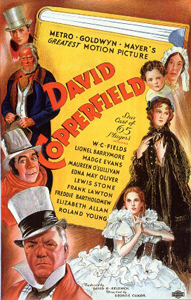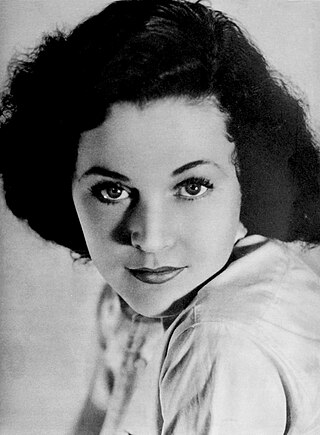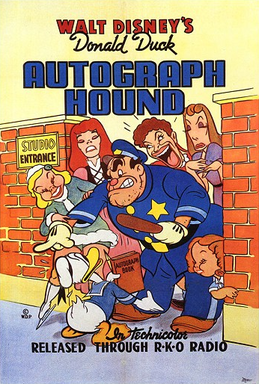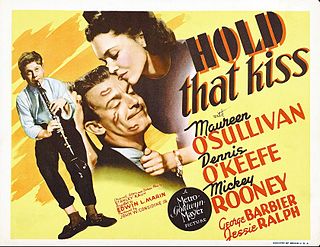
David Copperfield is a 1935 American film released by Metro-Goldwyn-Mayer based upon Charles Dickens' 1850 novel The Personal History, Adventures, Experience, & Observation of David Copperfield the Younger.

Lionel Barrymore was an American actor of stage, screen and radio as well as a film director. He won an Academy Award for Best Actor for his performance in A Free Soul (1931) and is known to modern audiences for the role of villainous Mr. Potter in Frank Capra's 1946 film It's a Wonderful Life.

John Barrymore was an American actor on stage, screen, and radio. A member of the Drew and Barrymore theatrical families, he initially tried to avoid the stage, and briefly attempted a career as an artist, but appeared on stage together with his father Maurice in 1900, and then his sister Ethel the following year. He began his career in 1903 and first gained attention as a stage actor in light comedy, then high drama, culminating in productions of Justice (1916), Richard III (1920), and Hamlet (1922); his portrayal of Hamlet led to him being called the "greatest living American tragedian".

Wallace Fitzgerald Beery was an American film and stage actor. He is best known for his portrayal of Bill in Min and Bill (1930) opposite Marie Dressler, as General Director Preysing in Grand Hotel (1932), as Long John Silver in Treasure Island (1934), as Pancho Villa in Viva Villa! (1934), and his title role in The Champ (1931), for which he won the Academy Award for Best Actor. Beery appeared in some 250 films during a 36-year career. His contract with Metro-Goldwyn-Mayer stipulated in 1932 that he would be paid $1 more than any other contract player at the studio. This made Beery the highest-paid film actor in the world during the early 1930s. He was the brother of actor Noah Beery and uncle of actor Noah Beery Jr.
The following is an overview of 1932 in film, including significant events, a list of films released and notable births and deaths.

Maureen Paula O'Sullivan was an Irish actress who played Jane in the Tarzan series of films during the era of Johnny Weissmuller. She starred in dozens of feature films across a span of more than half a century and performed with such actors as Laurence Olivier, Greta Garbo, Fredric March, William Powell, Myrna Loy, Marie Dressler, Wallace Beery, Lionel Barrymore, the Marx Bros. and Woody Allen. In 2020, she was listed at number eight on The Irish Times list of Ireland's greatest film actors.

Richard Thorpe was an American film director best known for his long career at Metro-Goldwyn-Mayer.

Dudley Digges was an Irish stage actor, director, and producer as well as a film actor. Although he gained his initial theatre training and acting experience in Ireland, the vast majority of Digges' career was spent in the United States, where over the span of 43 years he worked in hundreds of stage productions and performed in over 50 films.

Eric Linden was an American actor, primarily active during the 1930s.

The black dog is a supernatural, spectral, or demonic hellhound originating from English folklore that has also been seen throughout Europe and the Americas. It is usually unnaturally large with glowing red or yellow eyes, is often connected with the Devil, and is sometimes an omen of death. It is sometimes associated with electrical storms, and also with crossroads, barrows, places of execution and ancient pathways.

The Devil-Doll is a 1936 American horror film directed by Tod Browning and starring Lionel Barrymore and Maureen O'Sullivan. The film was adapted from the novel Burn Witch Burn! (1932) by Abraham Merritt. It has become a cult film.

The Hound of the Baskervilles is a 1978 British comedy film spoofing the 1902 novel The Hound of the Baskervilles by Sir Arthur Conan Doyle. It starred Peter Cook as Sherlock Holmes and Dudley Moore as Dr. Watson. A number of other well-known British comedy actors appeared in the film including Terry-Thomas, Kenneth Williams and Denholm Elliott.

The Show is a 1927 American silent drama film directed by Tod Browning, based upon Charles Tenney Jackson's 1910 novel The Day of Souls.
Public Hero ﹟1 is a 1935 American crime film starring Lionel Barrymore, Jean Arthur, Chester Morris and Joseph Calleia. The Metro-Goldwyn-Mayer production was directed by J. Walter Ruben.

A Family Affair is a 1937 American comedy film directed by George B. Seitz and based on the 1928 play Skidding by Aurania Rouverol. It was the first of 16 films now known as the Andy Hardy series, although Andy Hardy did not become the main character in the series until several more installments had been made. The film stars Lionel Barrymore, Cecilia Parker, Eric Linden, Mickey Rooney and Charley Grapewin.

The Autograph Hound is a 1939 Donald Duck cartoon which features Donald Duck as an autograph hunter in Hollywood. Many celebrities from the 1930s are featured. This is the first cartoon where Donald Duck is featured in his blue sailor hat.

Hold That Kiss (1938) is a romantic comedy film starring Maureen O'Sullivan and Dennis O'Keefe.

His Glorious Night is a 1929 pre-Code American romance film directed by Lionel Barrymore and starring John Gilbert in his first released talkie. The film is based on the 1928 play Olympia by Ferenc Molnár.

The Hound of the Baskervilles is a 1937 German mystery film directed by Carl Lamac and starring Peter Voss, Fritz Odemar and Fritz Rasp. It is an adaptation of the 1902 Sherlock Holmes story The Hound of the Baskervilles by Arthur Conan Doyle. It was shot at the Babelsberg Studios in Potsdam and on location at the neo-Gothic Moyland Castle. The film's sets were designed by the art directors Wilhelm Depenau and Karl Vollbrecht.
William Stack was an American actor who began his acting career in Great Britain. Over the course of his career he appeared in over 50 films in the United States and United Kingdom, including such notable films as Mary of Scotland, Captains Courageous, and Gone with the Wind.
















